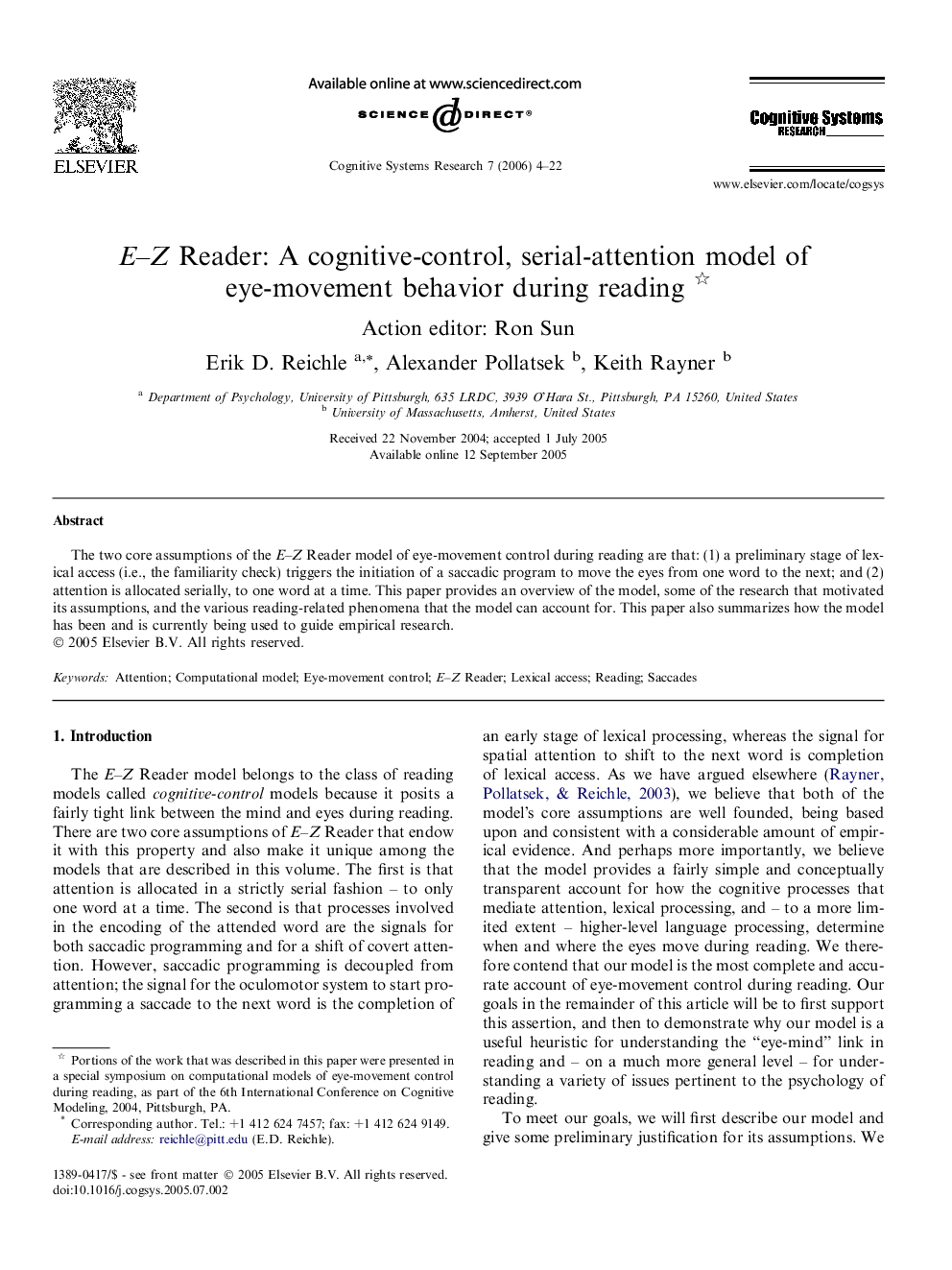| Article ID | Journal | Published Year | Pages | File Type |
|---|---|---|---|---|
| 378623 | Cognitive Systems Research | 2006 | 19 Pages |
Abstract
The two core assumptions of the E–Z Reader model of eye-movement control during reading are that: (1) a preliminary stage of lexical access (i.e., the familiarity check) triggers the initiation of a saccadic program to move the eyes from one word to the next; and (2) attention is allocated serially, to one word at a time. This paper provides an overview of the model, some of the research that motivated its assumptions, and the various reading-related phenomena that the model can account for. This paper also summarizes how the model has been and is currently being used to guide empirical research.
Related Topics
Physical Sciences and Engineering
Computer Science
Artificial Intelligence
Authors
Erik D. Reichle, Alexander Pollatsek, Keith Rayner,
